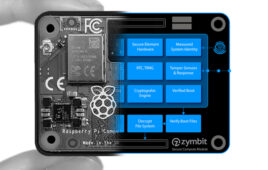Every year, 1.4 billion mobile phones are produced around the world. Many of us have more than one, but what are they made of, where do those materials come from, and what is the best thing to do with our devices once we have no more use for them?
The answers to all those questions are the focus of an eye-catching new project from scientists at the University of Plymouth.
By blending an entire mobile phone to dust, and then conducting a chemical analysis of the dissolved results, they hope to demonstrate why we should all take a keener interest in what is contained within everyday electrical items.
They also want to show the quantities of rare or so-called ‘conflict’ elements each phone contains, and encourage greater recycling rates once the devices reach the end of their useful lives.
The project was conceived by Dr Arjan Dijkstra and Dr Colin Wilkins, geologists from the University’s School of Geography, Earth and Environmental Sciences, with their initial interest being sparked by the increasing reliance of high-tech everyday items on rare mineral resources putting new demands on the global mining industry.
They then worked in tandem with Devon-based animation company Real World Visuals to produce a short video which demonstrates the amount and variety of the Earth’s resources used each year in global mobile phone production.
Dr Dijkstra, Lecturer in Igneous Petrology, said, “We rely increasingly on our mobile phones but how many of us actually think what is behind the screen? When you look the answer is often tungsten and cobalt from conflict zones in Africa. There are also rare elements such as neodymium, praseodymium, gadolinium and dysprosium, not to mention quantities of gold, silver and other high value elements. All of these need to be mined by extracting high value ores, which is putting a significant strain on the planet.”
To conduct the experiment, the researchers took the blended phone and mixed it at almost 500°C with a powerful oxidizer, sodium peroxide. They were then able to do a detailed analysis of the resulting solution in acid to determine its precise chemical contents.
The results showed the phone used in the tests contained 33g of iron, 13g of silicon and 7g of chromium, as well as smaller quantities of other abundant substances.
However, it also featured a number of critical elements including 900mg of tungsten and 70mg of cobalt and molybdenum, as well as 160mg of neodymium and 30mg of praseodymium. And each phone contained 90mg of silver and 36mg of gold.
This means that concentration-wise, a phone has 100 times more gold – or 10 times more tungsten – than a mineral resource geologists would call ‘high-grade’.
It also demonstrates that to create just one phone you would need to mine 10-15kg of ore, including 7kg of high-grade gold ore, 1kg of typical copper ore, 750g of typical tungsten ore and 200g of typical nickel ore.
Dr Wilkins, Lecturer in Economic Geology, added, “Mining can be part of the solution to the world’s problems. But we are now in a climate where people are becoming more socially responsible and interested in the contents of what they are purchasing. Partly on the back of this, several of the major mobile phone companies have committed to upping their recycling rates. It is a positive sign that the throwaway society we have lived in for decades is changing, and we hope this project will encourage more people to ask questions about their own behaviours.”
The collaboration with Real World Visuals was facilitated as part of the Creative Associates initiative, overseen by the University’s Sustainable Earth Institute and supported by Higher Education Innovation Funding (HEIF). It is designed to uncover novel and innovative ways of communicating research to a public audience.
Antony Turner, CEO at Real World Visuals, added, “We have enjoyed collaborating with Arjan and Colin to find a way to bring this research alive and make it accessible to the wider public. I now view the phone in my pocket not just as a window on the world but also as a store of precious metals. I wonder where these metals have come from and whether they will be re-used after the phone is discarded.”
Filed Under: Product design




